Rural Veterans and Local Nonprofits Receive Critical Housing Support in partnership with The Home Depot Foundation
Contacts: Dan Stern, dan@ruralhome.org
AHRV Team, ahrv@ruralhome.org
(202) 842-8600
Washington, DC, May 31, 2023 – Veterans and their families in fourteen rural communities will have better lives, thanks to The Home Depot Foundation and the Housing Assistance Council. The Foundation is awarding grants totaling $366,907 to fourteen local nonprofit housing agencies around the country to preserve housing for veterans in rural America.
The grants are part of The Home Depot Foundation’s mission to provide affordable and accessible housing solutions to U.S. veterans and invest $500 million in veteran causes by 2025. Many veterans and their families face major housing challenges, often exacerbated by issues related to unemployment, age, and service-related disabilities. The Home Depot Foundation and the Housing Assistance Council (HAC) are dedicated to giving back to those who have answered the highest call of service to our nation.
As part of its Affordable Housing for Rural Veterans (AHRV) Initiative, HAC works with The Home Depot Foundation to administer grants that bolster and support the work of rural nonprofit housing agencies to deliver critical housing support to veterans. “The Home Depot Foundation’s support remains a cornerstone of HAC’s work to strengthen local organizations that build and maintain homes for veterans across rural America,” said David Lipsetz, HAC’s CEO. “The more we support the local groups that are helping veterans, the more we see veterans and their hometowns thrive.” As rural America is home to a disproportionately high number of service women and men, HAC remains deeply committed to supporting our nation’s service women and men by uplifting local nonprofits and their work to house and ensure the habitability of their homes and rural communities.
The grantee organizations – described below – provide a range of programs. With the grants, veterans who own homes in Arizona, Florida, Georgia, Maryland, Minnesota, New Jersey, New York, North Carolina, Pennsylvania, South Carolina, South Dakota, and Tennessee will obtain critical repair assistance. Altogether, 43 veterans and their families will benefit from these grants.
About The Home Depot Foundation
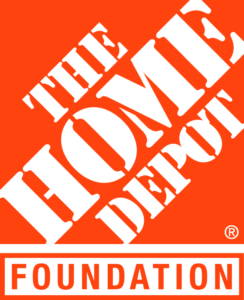 The Home Depot Foundation works to improve the homes and lives of U.S. veterans, support communities impacted by natural disasters and train skilled tradespeople to fill the labor gap. Since 2011, the Foundation has invested more than $475 million in veteran causes and improved more than 55,000 veteran homes and facilities. The Foundation has pledged to invest half of a billion dollars in veteran causes by 2025 and $50 million in training the next generation of skilled tradespeople through the Path to Pro program.
The Home Depot Foundation works to improve the homes and lives of U.S. veterans, support communities impacted by natural disasters and train skilled tradespeople to fill the labor gap. Since 2011, the Foundation has invested more than $475 million in veteran causes and improved more than 55,000 veteran homes and facilities. The Foundation has pledged to invest half of a billion dollars in veteran causes by 2025 and $50 million in training the next generation of skilled tradespeople through the Path to Pro program.
To learn more about The Home Depot Foundation visit HomeDepotFoundation.org and follow them on Twitter @HomeDepotFound and on Facebook and Instagram @HomeDepotFoundation.
About the Housing Assistance Council
The Housing Assistance Council (HAC) is a national nonprofit that supports affordable housing efforts throughout rural America. Since 1971, HAC has provided below-market financing for affordable housing and community development, technical assistance and training, research and information, and policy formulation to enable solutions for rural communities.
To learn more about the Housing Assistance Council, visit www.ruralhome.org and follow HAC on LinkedIn, Facebook, Instagram, YouTube, and Twitter @RuralHome.
About the Grantees
- Creative Compassion, Inc., Crossville, TN, will utilize $22,500 to provide needed critical repairs for three (3) rural, low-income veterans in Crossville and Jamestown, TN. For additional information on Creative Compassion, Inc., visit their website at https://ccihomes.org/.
- Good Works, Inc., Coatesville, PA, will utilize $30,000 to provide critical repairs to the homes of two (2) low-income rural veterans in Coatesville, PA. For additional information on Good Works, Inc., visit their website at https://www.goodworksinc.org/.
- GROW South Dakota, Sisseton, SD, will utilize $30,000 to provide critical repairs for three (3) rural, low-income veterans in Sisseton, SD. For additional information on GROW SD, visit their website at https://www.growsd.org/.
- Habitat for Humanity of Hillsborough County, Tampa, FL, will utilize $30,000 to provide critical roof replacement and new roof installation to the homes of two (2) low-income rural veterans in rural Hillsborough County, FL. For additional information on Habitat for Humanity of Hillsborough County, visit their website at https://www.habitathillsborough.org/
- Habitat for Humanity of South-Central New Jersey, Maple Shade, NJ, will utilize $20,000 to provide critical home repairs for three (3) rural low-income veterans. For additional information on Habitat for Humanity of South-Central New Jersey, visit their website at https://www.habitatscnj.org/.
- Habitat for Humanity of York County, Rock Hill, SC, will utilize $10,000 to support critical repairs and accessibility modifications for one (1) rural low-income veteran. For additional information on Habitat for Humanity of York County, visit their website at https://yorkcountyhabitat.org/.
- Habitat for Humanity Susquehanna, Bel Air, MD, will utilize $16,157 to support critical repairs and accessibility modifications for one (1) rural low-income veteran in Elkton, MD. For additional information on Habitat for Humanity Susquehanna, visit their website at https://habitatsusq.org/.
- New Foundation Development, Inc., Calhoun, GA, will utilize $28,250 to provide critical repairs and ADA accessibility modifications for three (3) low-income rural veteran homeowners in Resaca and Calhoun, GA. For additional information on New Foundation Development, Inc., visit their website at https://nfdinc.org/.
- Pensacola Habitat for Humanity, Pensacola, FL, will utilize $30,000 to provide critical home repairs for two (2) rural low-income veterans. For additional information on Pensacola Habitat for Humanity, visit their website at https://pensacolahabitat.org/.
- Rebuilding Together Minnesota, Minneapolis, MN, will utilize $30,000 to support the rehabilitation and modification of four (4) veteran owned units. For additional information on Rebuilding Together Minnesota, visit their website at https://rtmn.org/
- Rebuilding Together Saratoga County, Ballston Spa, NY, will utilize $30,000 to provide critical repairs and ADA accessibility modifications for four (4) low-income rural veteran homeowners. For additional information on Rebuilding Together Saratoga County, visit their website at https://www.rtsaratoga.org/
- Red Feather Development Group, Flagstaff, AZ, will utilize $30,000 to provide critical home repairs for four (4) rural low-income Native American veterans. For additional information on Red Feather Development Group, visit their website at https://www.redfeather.org/.
- Swift County Rural Development Authority, Benson, MN, will utilize $30,000 to provide critical repairs, roof, plumbing, HVAC unit and water heater for one (1) very low-income veteran homeowner in Clontarf, MN. For additional information on Swift County Rural Development Authority, visit their website at https://www.swiftcounty.com/hra.
- Transylvania Habitat for Humanity, Brevard, NC, will utilize $30,000 to provide critical repairs and accessibility modifications for ten (10) low-income rural veteran homeowners. For additional information on Transylvania Habitat for Humanity, visit their website at https://transylvaniahabitat.org/.

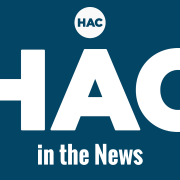
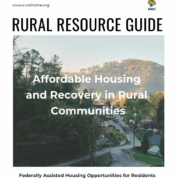
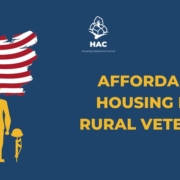 Housing Assistance Council
Housing Assistance Council

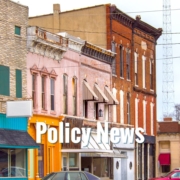

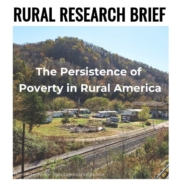 Housing Assistance Council
Housing Assistance Council